Digestive upsets, including heart burns, acidity, bloating, and indigestion, are very common these days. Work environments that require long hours of sitting, unhealthy eating patterns, erratic lifestyle schedules, lack of adequate sleep, and stress are some of the most common contributing factors for poor digestion. According to Ayurveda, Agni or digestive fire becomes sluggish and digestion will be hampered. The body then starts producing and storing toxins. The Ayurvedic texts call these toxic residue Ama, which is quoted as the root cause of all diseases.
But studies suggest that regular practice of yoga for digestion could help boost digestion by eliminating the root causes. Let’s take a look at some of the yoga poses that could help you.
Yoga Poses for Better Digestion
Vajrasana massages your belly and eases stomach cramps. It also improves digestion. In fact, it is one of the most popular yoga poses for digestion. The good news is that practicing this pose for 10 minutes after your meals daily could keep your digestive fire burning.
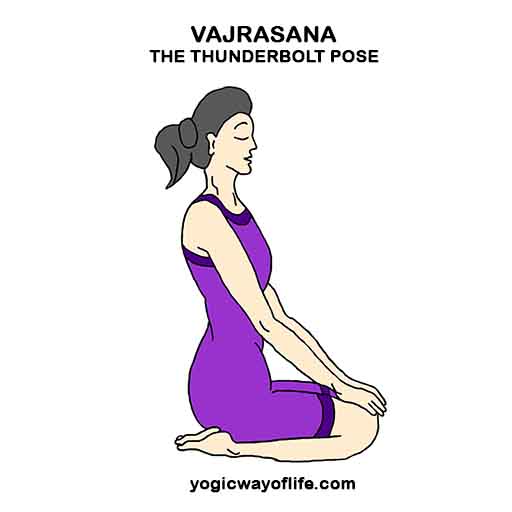
Kneel on the floor and sit in your heel. Press your palms into the thighs, lift your chest and lengthen your spine. Push your hips into your heels. Hold for five breaths. Stretch out your legs for couple of seconds before repeating again.
Start with five to seven breaths, increasing the duration to 10 minutes with practice.
Breathe deeply as you move from Cat to Cow and vice versa to massage your digestive organs. The movement stretches and compresses your intestines, enhancing your circulation, and improving your gut health.
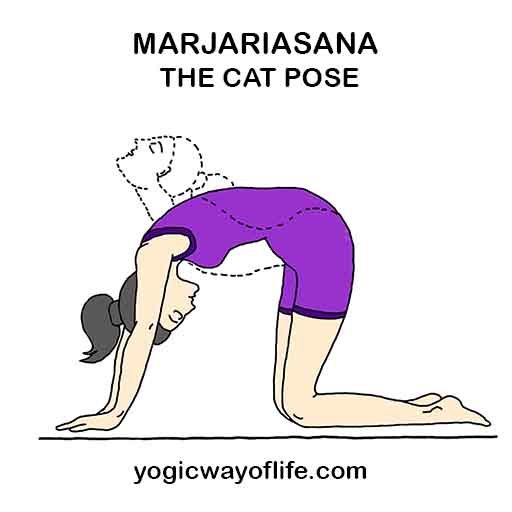
After completing Vajrasana, come to Table Top position. Align your wrists under your shoulders. Separate your feet and knees hip-width apart. Spread your fingers wide, pressing the heels of the palms into the floor. Tuck your toes. Inhale, arch your spine, and look up. Allow your abdomen to expand completely, navel moving towards the floor. Hold for seven deep breaths.
As you exhale, round the back, pull your navel into the spine, and tuck the chin to the chest. Gaze at the floor. Squeeze your buttock and abdominal muscles as you look down. Hold for seven deep breaths.
This completes one round of the Vinyasa. Repeat 15 times.
Breathe deeply in Adho Mukha Svanasana to calm your anxious belly. Pull your navel up and in towards the spine with each exhalation to nourish your gut and ease digestive woes.
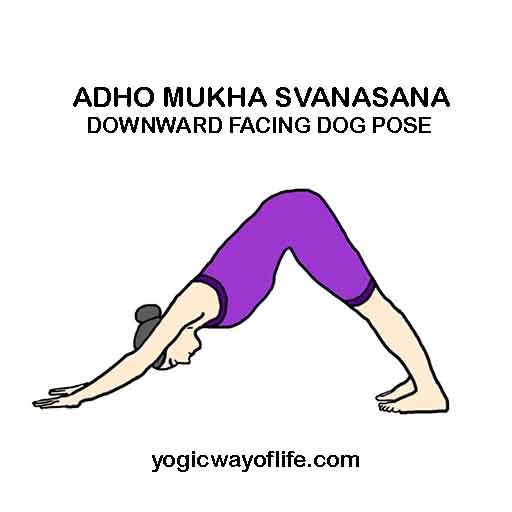
Pressing the palms into the floor, raise your hips to the ceiling. Allow your heels to move close to the floor. With each inhalation, lift your hips toward the ceiling. With each exhalation, pull your navel close to the spine and gaze at your abdomen. Hold for seven deep breaths.
Twists are good for detoxification. As you compress and release, the gut experiences a surge in the blood flow, soothing your digestive worries.
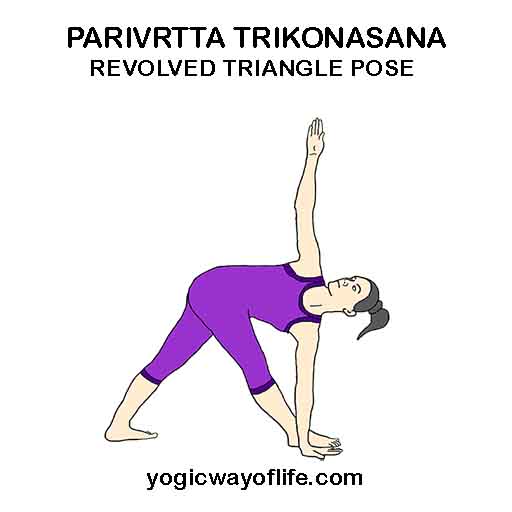
From Adho Mukha Svanasna, inhale and lift your right leg up. Exhale and place it in between your palms. Let both legs be straight and hips squared to the front. Pressing the right palm into the floor, inhale and lift the left arm to the ceiling. Exhale and twist to your left, opening the left shoulder and chest to the ceiling. Gaze at your left fingertips. Hold for seven deep breaths.
Inhale, untwist, and place the left palm on the floor. Exhale and bring your left leg back to come back into Downward Facing Dog Pose. Repeat the same with your right leg.
This simple forward bend helps you relax, and relieve the stress that hampers your digestion.
From Adho Mukha Svanasana, walk your hands back and come into Uttanasana. Inhale and as you exhale, squat completely. Inhale, sit on the floor and stretch out your legs. Exhale and engage your core. Lift the flesh away from your gluteus so that you are balancing on your sitting bones.
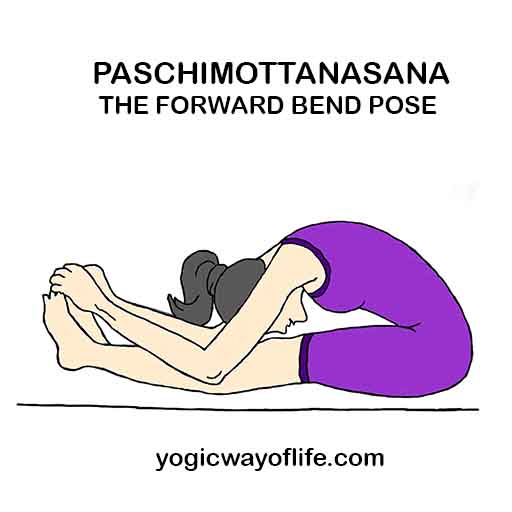
Inhale, lengthen your spine, and extend your hands over your head. As you exhale, fold forward from your hips resting your abdomen on your thighs. Hold your feet from the sides. With each inhalation, push your hips back and stretch your torso forward. With each exhalation, deepen your forward fold. Once you reach a comfortable level, hold the posture for seven deep breaths.
Tips: Keep your knees bent and hold your feet if your abdomen is not resting on your thighs or if you are rounding your upper back. The idea is to lengthen the spine.
This seated twist has a powerful ability to cleanse your digestive system. While the twist cuts the blood supply to the abdominal organs, as you release the compression, the blood gushes into the digestive organs, cleansing and nourishing them.
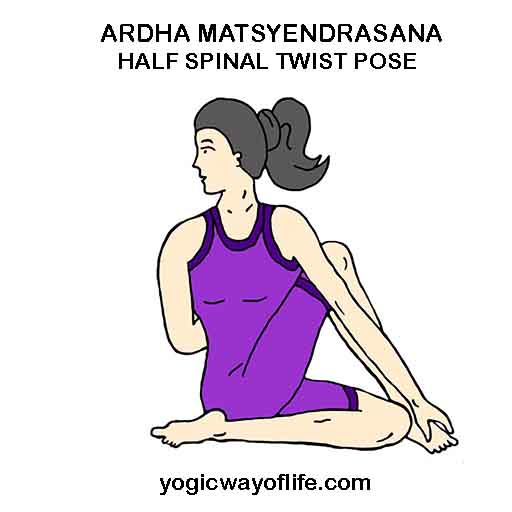
Once you complete Paschimottanasana, inhale and slowly straighten your torso. Bend your left knee and rest the left heel close to your left buttocks. Bend your right knee, cross it over the left knee, and rest the foot on the floor. Rest your right palm behind you, on the floor. Inhale and lift your left arm. Exhale and bring your left elbow outside your right knee and twist to the right. Hold for seven deep breaths, deepening the twist with each exhalation.
Inhale, release the twist, and repeat on the other side.
As the name suggests, the posture helps to eliminate any gas trapped in your abdomen. It is one of the best yoga poses for digestion and bloating.
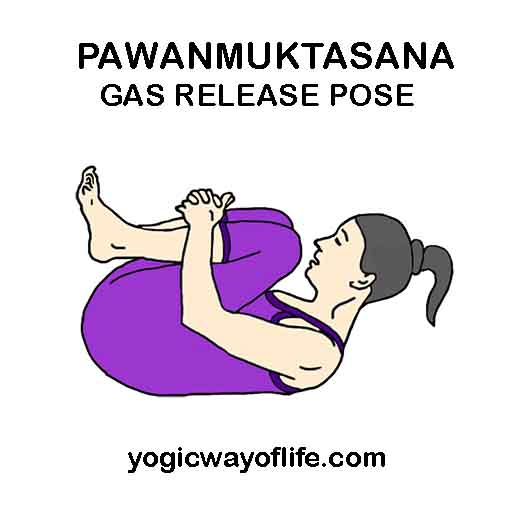
After Ardha Matsyendrasana, stretch out the legs and gently recline on your back. Bend your knees and place your feet close to your buttocks. Hug your knees with your arms. Inhale and lift your legs away from the floor and hug it to the chest. Exhale, lift your head from the floor, and bring the forehead close to the knees. Hold the posture, pressing your thighs on your abdomen, for seven deep breaths.
This posture, again a twist, improves digestion, expels gas, and eases constipation. This pose is also beneficial to burn your belly fat.
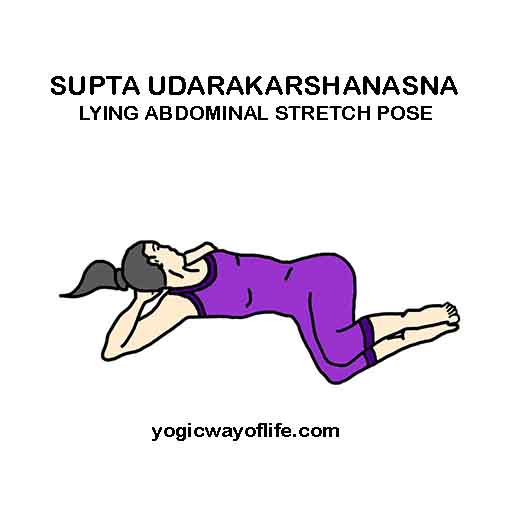
After completing Pavanamuktasana, inhale and release the posture, resting the feet flat on the floor. Exhale and interlace your fingers behind your head. Inhale and as you exhale, bend your knees to the right and look to your left. Keep the feet on the floor. Pulling the navel close to the spine, hold for seven deep breaths.
Inhale and come back to the center. Exhale and repeat on the other side.
Yoga Mudra for Digestion
Pushan mudra can be literally translated into the Mudra of digestion. It activates the Prana Vayu, Samana Vayu, and Apan Vayu – the energies of reception, digestion & assimilation, and elimination respectively.
Sit in any comfortable seated posture where you can keep your spine straight without any discomfort for the next 30 minutes. While you can enjoy the mudra any seated posture, Vajrasana and Bhadrasana are ideal as they stimulate your digestive meridians.
Once you are ready, rest your palms on your thighs and shape the palms in the following way.
-
MUDRA FOR UPPER GI TRACT
Shape your right palm into Rudra Mudra. This reduces acid reflux and belching.
Rudra Mudra: Gently press the tips of your index and middle fingers on the tip of the thumb. Stretch your ring and little fingers, the palm facing up.
Shape your left palm in Apana Mudra, the gesture of elimination. Gently press the tips of your middle and ring finger on your thumb.
2.MUDRA FOR LOWER GI TRACT
Shape your right palm into Prana Mudra. This offers relief from gas, bloating, and constipation.
Prana Mudra: Gently press the tips of your ring and little fingers on your thumb. Stretch out the index and middle fingers, palm facing up.
Shape your left palm in Apana Mudra, the gesture of elimination. Gently press the tips of your middle and ring finger on your thumb.
You can practice the mudra for 5 minutes as an instant remedy when feel bloated or just to improve your digestion. Alternatively, you could practice the posture for 45 minutes a day daily for unobstructed digestive experience.
So, give your digestion a boost with these yoga poses for digestion a try! You may be surprised how well they work!

Thank you very much, dear brothers for forwarding these marvelous instructions. I have indeed appreciated it a lot.
Namastê!
Namaste Sir/ Madam
Thanks you for sending this article. It is very informative.
Thank you
Arun Kumar.R